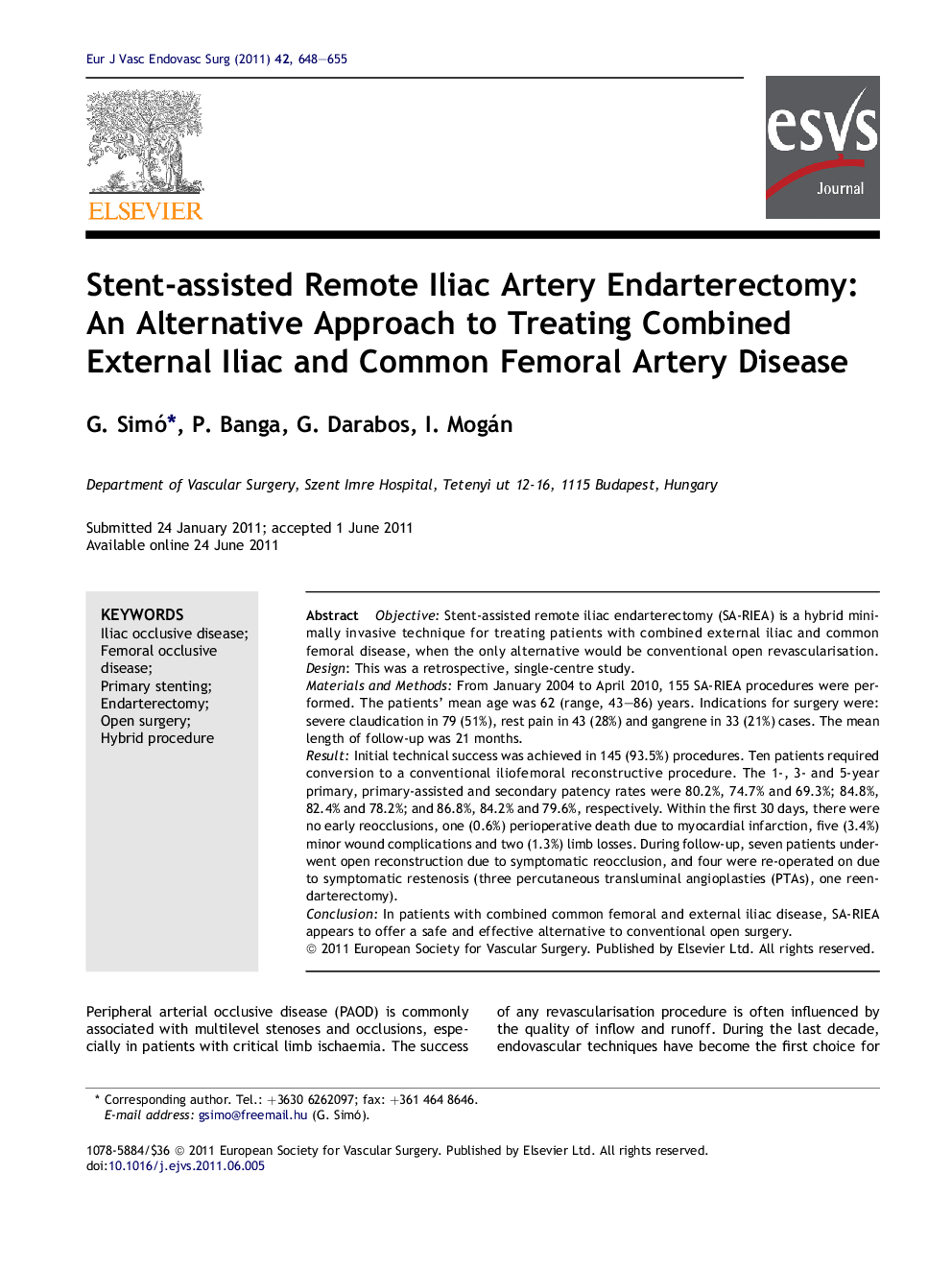| Article ID | Journal | Published Year | Pages | File Type |
|---|---|---|---|---|
| 2913052 | European Journal of Vascular and Endovascular Surgery | 2011 | 8 Pages |
ObjectiveStent-assisted remote iliac endarterectomy (SA-RIEA) is a hybrid minimally invasive technique for treating patients with combined external iliac and common femoral disease, when the only alternative would be conventional open revascularisation. Design: This was a retrospective, single-centre study.Materials and MethodsFrom January 2004 to April 2010, 155 SA-RIEA procedures were performed. The patients’ mean age was 62 (range, 43–86) years. Indications for surgery were: severe claudication in 79 (51%), rest pain in 43 (28%) and gangrene in 33 (21%) cases. The mean length of follow-up was 21 months.ResultInitial technical success was achieved in 145 (93.5%) procedures. Ten patients required conversion to a conventional iliofemoral reconstructive procedure. The 1-, 3- and 5-year primary, primary-assisted and secondary patency rates were 80.2%, 74.7% and 69.3%; 84.8%, 82.4% and 78.2%; and 86.8%, 84.2% and 79.6%, respectively. Within the first 30 days, there were no early reocclusions, one (0.6%) perioperative death due to myocardial infarction, five (3.4%) minor wound complications and two (1.3%) limb losses. During follow-up, seven patients underwent open reconstruction due to symptomatic reocclusion, and four were re-operated on due to symptomatic restenosis (three percutaneous transluminal angioplasties (PTAs), one reendarterectomy).ConclusionIn patients with combined common femoral and external iliac disease, SA-RIEA appears to offer a safe and effective alternative to conventional open surgery.
